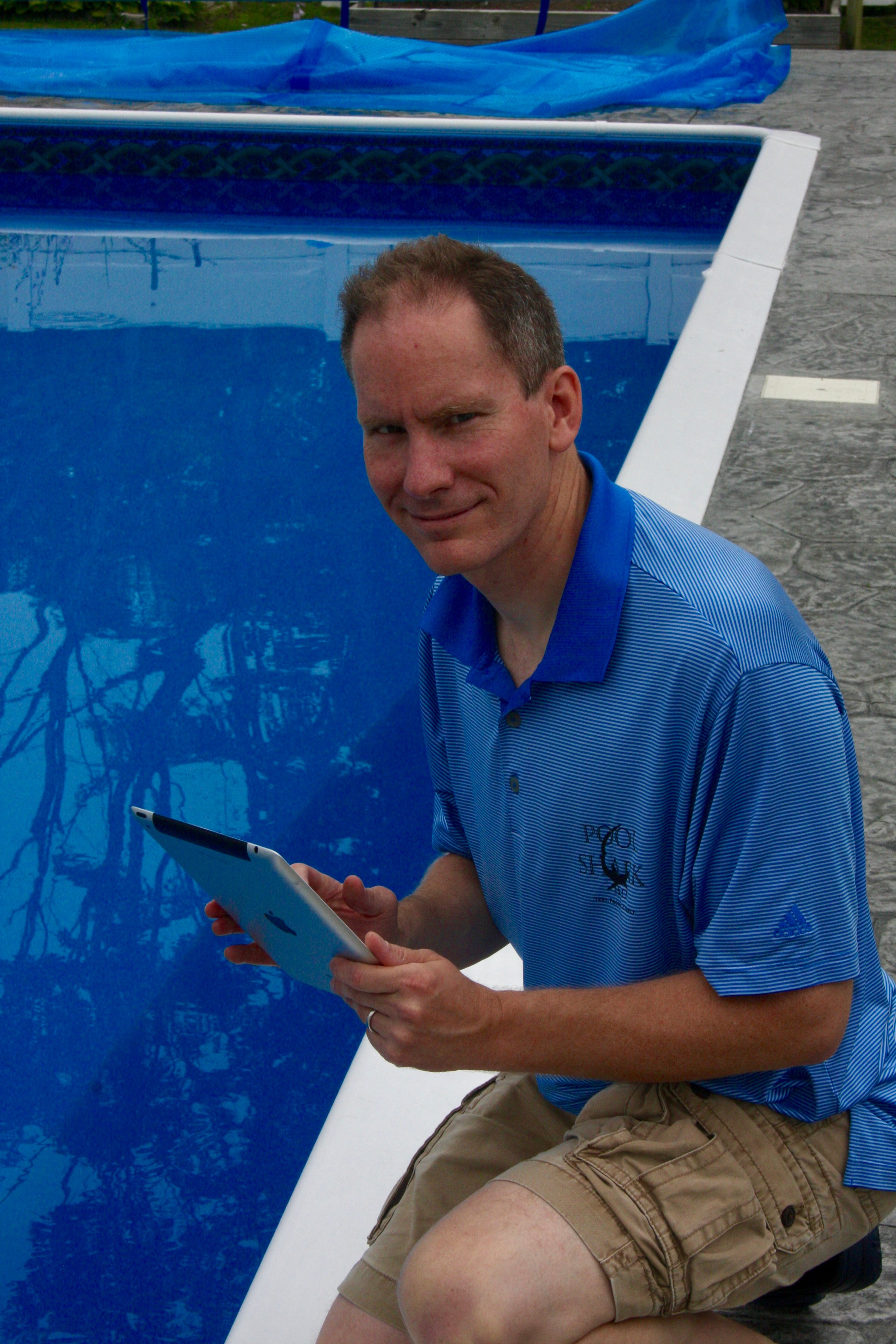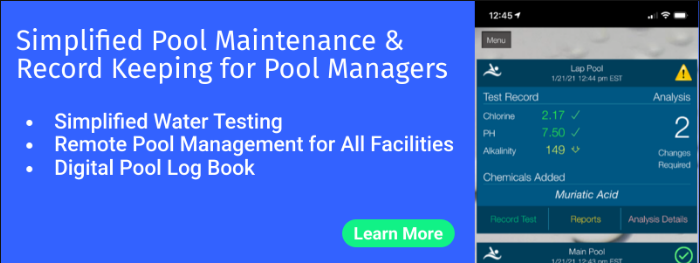If you're managing a commercial pool that's been drained and is now showing signs of algae growth, you're not alone. Whether it's a seasonal closure, maintenance period, or part of a renovation schedule, it's surprisingly common for empty pools to develop algae. And in a commercial setting, that can be more than just an eyesore—it’s a maintenance headache, a health code risk, and potentially a costly delay in reopening.

Ahead, we’ll take you through why algae grows in empty pools, plus the steps you’ll need to take to clean an empty pool with algae, and how to prevent regrowth both when the pool is filled and empty.
Why Algae Can Grow in an Empty Pool
It may seem counterintuitive, but even without water, your pool isn’t necessarily safe from algae. Here’s why:
Moisture Lingers
Algae only needs a little bit of moisture to survive, which makes pools the perfect environment for it. If there's any standing water left in low spots, crevices, or even plumbing lines, that’s enough to keep algae alive and growing—especially in humid or rainy environments.
Organic Debris
Leaves, dirt, and other organic materials can blow into the empty pool and settle on the floor. These act as food for algae, as well as give it something to anchor to.
Lack of Chemical Protection
It’s easy for algae spores to enter a pool environment; they can be found in rain, air, and soil, and can even be brought in on swimwear that was worn in a natural body of water. You can’t stop algae from being in a pool, but you can use sanitizer to kill it. When a pool is filled and maintained, the water chemistry (chlorine, stabilizer, balanced pH) keeps algae at bay. But once it’s drained, that protective barrier is gone—and algae is able to quickly replicate.
Poor Drainage or Pool Surface Damage
Cracks or rough spots in plaster, vinyl, or tile can hold on to moisture and spores. If your pool doesn’t drain completely or dries unevenly, those areas become perfect spots for algae to take hold.
Essentially, even if your pool looks dry, it might not be totally clean or safe from algae. That’s why it’s important to deep clean, disinfect, and protect the pool surfaces before long-term storage. However, if you need to remove algae when preparing to reopen the pool, the good news is that it’s possible to clean it effectively and prevent it from taking over both during the season, as well as the next time it’s empty.
Here's how to clean an empty pool with algae efficiently, reduce downtime, and set your pool up for long-term success.
Step-by-Step: How to Clean an Empty Pool with Algae
Step 1: Evaluate the Algae Situation
Start with a visual inspection of the pool's interior. Algae can grow in shades of green, yellow, or even black, and tends to thrive in shaded corners, cracks, and spots where water may have pooled.
Make note of how extensive the growth is, what surface types are impacted, and any visible damage or debris.
Step 2: Assemble Your Cleaning Crew and Tools
Depending on the size and surface of your pool, you may need a team to complete this process efficiently.
Here’s what you’ll need:
- Commercial-grade stiff pool brushes
- High-pressure hose or pressure washer
- Algae-killing cleaner or appropriate chemical solution
- Manual vacuum or wet/dry vac
- PPE (gloves, goggles, masks for chemical use)
- Buckets, sprayers, and long-handled tools
Step 3: Remove Organic Debris
Clear out any leaves, dirt, or leftover materials. These provide nutrients for algae growth and can interfere with cleaning chemicals.
Step 4: Scrub All Surfaces
Using a stiff-bristled brush or pressure washer (on suitable surfaces), thoroughly scrub walls, floors, steps, and corners. Focus on joints, seams, and textured surfaces where algae can cling. Work systemically by starting at one end, then working your way around to avoid missing sections.
Step 5: Disinfect and Treat the Algae
Depending on the pool surface, use one of the following:
- Sodium hypochlorite (liquid chlorine) – widely used for its effectiveness
- Algaecides – choose a commercial-grade, EPA-registered product
- Diluted bleach or hydrogen peroxide – effective for non-porous surfaces and light infestations
Apply the treatment generously, allow proper contact time (as per product instructions), then scrub again and rinse thoroughly.
Step 6: Rinse and Remove Residuals
Use a high-pressure hose or vacuum to remove residual algae, dirt, and cleaning agents. Ensure all cleaning products are thoroughly rinsed out—especially important before refilling to avoid chemical interactions.
Step 7: Inspect and Maintain Equipment
If algae was present, there's a high likelihood that it’s also made its way into filters, pumps, or pipes—especially in systems that weren’t fully drained. Clean and backwash filters, inspect for clogs or buildup, and schedule additional maintenance if needed.
Step 8: Refill, Rebalance, and Leverage Technology to Stay Ahead of Algae
Once the pool is clean, refill it with fresh water. Then test and balance pool chemicals to ensure pH, alkalinity, stabilizer, and free chlorine are within optimal levels. Check these against your local or state code, or the CDC’s Model Aquatic Health Code.
After the process you’ve just been through to thoroughly remove algae, disinfect, refill the pool, and carefully balance the water chemistry, you want to take care to keep the water in balance for the remainder of the pool season. This ensures the health and safety of your pool guests, but also ensures the pool’s chlorine can sanitize and effectively kill contaminants, bacteria, viruses, and algae spores. If you combine this with regular maintenance, including brushing of pool walls and cleaning sediment and debris regularly, you’ll set yourself up for a better chance at limiting algae growth the next time the pool is drained.
When it comes to pool chemistry, manual tracking and guesswork leave room for error—especially across multiple commercial pools. That’s where Pool Shark H2O comes in.
With Pool Shark H2O, you can:
- Log and monitor test results from any device
- Get accurate chemical dosing recommendations based on your pool’s size and current readings: PoolShark H2O does the complicated chemical math for you or your staff
- Maintain compliance with health codes and safety protocols
- Spot trends and issues before they turn into bigger problems
Whether you manage one pool or dozens, Pool Shark H2O simplifies pool maintenance and reduces the risk of algae recurrence. Plus, it keeps records for accountability and health inspection readiness.
Final Tips for Commercial Pools to Prevent Algae Growth
- Clean regularly, even if the pool is unused
- Keep pool covers secure and debris-free
- Monitor surrounding vegetation and drainage
- Schedule routine inspections of filtration and circulation systems, as poor filtration or circulation can also be a cause of algae growth
A clean pool is a safe, operational pool.
Preventing and removing algae from an empty commercial pool doesn’t have to be overwhelming. With a systematic approach and the right tools (including digital ones like Pool Shark H2O), you can minimize downtime and maintain a safe, healthy pool with clean, sparkling water–no algae in sight.



